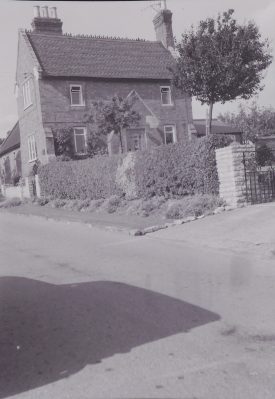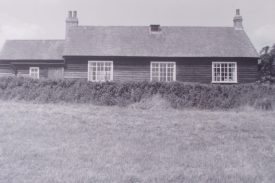What else do I remember of the village school? There were high points and low points. A low point for me, as for Sue Shirley, was undoubtedly school dinners. These were, quite candidly, awful. Most children took them and I did myself for perhaps the first year, until I rebelled and would go home for lunch. The meals were not prepared on site but were delivered each morning from some central catering agency that was operated by the local authority in charge of the schools. However, during that first year I got a sense not just of the sheer awfulness of school dinners, their tedious slop and tastelessness, but of the overall organisation that accompanied them.
From one end of the school to the other there was a long corridor, perhaps 20 feet wide. On one side it gave off to a couple of cloakrooms for the children to hang their coats. On the other side were the three classrooms. For school dinner – more accurately, lunch – long tables were set up with benches, with the younger children at one end of the hallway, and the older ones at the other. The atmosphere was bedlam. The teachers supervised, but the chatter would periodically reach a crescendo. At that point the head teacher would intervene and enforce silence. Her threat always was that if the noise got much louder, then the ceiling would fall down. Did she know something that we didn’t? One day it did indeed fall down, though during class, so no-one was hurt.
The Christmas concert
A highlight of the year was, as Sue describes, the Christmas concert. This was almost always given at the Village Hall. This was opposite the house where we lived and had been built as a community centre for parties – there was always a Christmas party for the children of the parish – once-weekly whist drives, the occasional dance, jumble sales, and meetings of the Women’s Institute.
The concert consisted largely of dramatic presentations: usually short ones, since the children’s abilities would have been severely taxed otherwise. These presentations were typically organised around Christmas themes: Good King Wenceslas and his activities or Father Christmas. I once played Father Christmas. I was supposed to descend (as per time-honoured ritual) down a chimney and on moving towards the front of the stage my first line was “I’m Father Christmas.” And that is pretty much all I can remember about the Christmas concerts, apart from the fact that they were always fun.
Frosty seasons
There were other things that I remember about Budbrooke School. As any good English person knows, the damp climate means that whenever the temperature dips below freezing, there is prolific hoar frost, not just on the trees but on the tops of walls, on concrete surfaces, on macadamised surfaces – like school playgrounds. So indeed, come wintertime, making a slide across the playground was a common pastime. And after school, as the temperatures were heading downward, the head teacher would sometimes bring out a pail of water from her house (which adjoined the school) swill it down that part where there was a slight gradient, and in less than 15 minutes there was a brilliant slide.
The head teacher, incidentally was Miss Enid V. Cooper and she was quite terrific. Unmarried at the time I attended the school, she lived on the school house within the school grounds. She was responsible for the ‘seniors’ and my impression is of a lovely calm and caring lady, firm where necessary, but genuinely interested in the children. She went out of her way to provide extracurricular activities that would not have happened without her initiative, including trips to art galleries in London, and a trip to a theatre where the Old Vic Company was playing. The children came from culturally quite ordinary if not deprived backgrounds, and she tried to raise their horizons.










Comments
Add a comment about this page